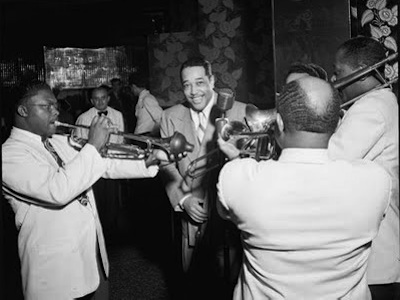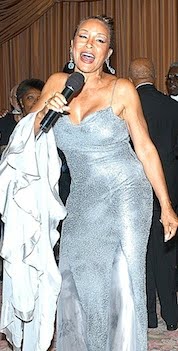The "Duke" Gets His Due in Austin - the "Live Music Capital of the World"!

"In jazz he was a giant among giants. And in twentieth-century music, he may yet one day be recognized as one of the half-dozen greatest masters of our time." – Gunther Schuller (1989)
Jazz legend Duke Ellington died in 1974, but his music lives on. The Duke Ellington Orchestra appeared with the Austin Symphony on New Year’s Eve at the Palmer Events Center in Austin, Texas and sent a large audience home with smiles on their faces.
I must confess that I went to this concert with one big question on my mind: "Is it possible to have a Duke Ellington Orchestra without the Duke himself at the piano, and without those legendary soloists who were the very heart and soul of the Ellington sound?"
After Duke passed away, his orchestra was taken over by his son Mercer. When Mercer died in 1996, the leadership passed to Paul Ellington, Duke’s grandson. Over the years, the orchestra has kept the Duke’s legacy alive with tours here and abroad, but the personnel has been constantly changing.
If the truth be told, even when Duke was alive, his orchestra came together from a large pool of players who knew his ‘book’ and who could shift in and out without affecting the overall sound. At least that was the theory, and it had to be this way; even Ellington couldn’t guarantee full-time employment when the big band era came to an end after the war. Musicians went where the money was, and that meant that the best were sometimes unavailable when Duke called.
The situation today is much the same. The Duke Ellington Orchestra is not a full-time job. When it tours, it gets the best musicians it can, but they are not always the same personnel who went on the previous tour.
The Duke Ellington Orchestra that appeared in Austin was led, not by Paul Ellington, but by Barry Lee Hall. A fine trumpet player, Hall goes back a long way with the Ellington orchestra and knows the ‘book’ like the back of his hand.
No list of personnel was made available at the concert, nor have I been able to get my hands on one; nevertheless, I would suspect that nearly all the musicians had many years of jazz experience. One of them I knew from previous encounters: the drummer Marty Morell. He played for years (1968-75) with the Bill Evans Trio and I knew him in Toronto for his work with Rob McConnell’s Boss Brass and other groups.

The evening's entertainment began with Ellington’s ‘theme song’, Take the “A” Train – actually written by his close associate Billy Strayhorn - and continued with other Ellington classics such as In a Sentimental Mood, The Mooche featuring five clarinets in close harmony, Chelsea Bridge (also written by Strayhorn), It Don’t Mean a Thing If It Ain’t Got That Swing, Caravan, and Black and Tan Fantasy.
Ellington died before he was able to complete The Three Black Kings. After his death, the suite was completed by Mercer Ellington and Luther Henderson. Given the serious nature of the piece, it was indeed a strange choice for a Pops concert, especially as the final work on the program. But as part of a tribute to a great composer, it was an appropriate selection.
With this new Year’s Eve concert, The Duke Ellington Orchestra gave a fully-rounded portrait of one of the most original figures in American music, and as 2009 drew to a close, gave a Texas audience plenty to think about.
Further listening and reading:
To hear Duke Ellington in his prime, with one of the greatest jazz orchestras ever assembled don’t miss Duke Ellington: the Blanton-Webster Band (RCA 5659-2-RB). There are no fewer than sixty-six songs in this boxed set including a legendary Cottontail featuring tenor saxophonist Ben Webster. If the music is not enough, check out a couple of books - Early Jazz and The Swing Era - in which Maestro Gunther Schuller tries to put the Duke's magic into words - and nearly pulls it off!
Paul E. Robinson is the author of Herbert von Karajan: the Maestro as Superstar, and Sir Georg Solti: His Life and Music, both available at Amazon.com.
Labels: Austin Symphony Orchestra, Barry Lee Hall, Duke Ellington Orchestra, Freda Payne, Marty Morell



